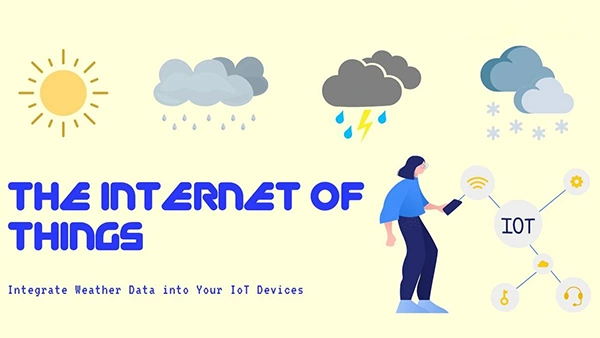
The weather changes are becoming more unpredictable with the rising global warming conditions. It has become urgent to address this issue, and weather forecasting apps integrated into IoT devices are transforming the future.
It is a complex system of connecting weather satellite API data with GPS tech to understand seasons and their behaviors.
Not only that, but it impacts several industries that are dependent on the weather conditions like aviation, fishery, tourism, etc.
This is the reason meteorologists and businesses are investing in climate monitoring systems for real-time and accurate reports.
In this article, we will highlight the progression of weather API data and how its integration into IoT devices is beneficial for several industries in 2024.
Gone are the days when large devices were used in the 1800s and 1900s to understand the seasons. Nowadays, the weather update is conveniently available on our mobile devices.
We take for granted many IoT tools that work simultaneously with the GPS and the weather satellites. These satellites with high-tech sensors orbit the Earth, analyze the atmosphere, and send back images predicting hurricanes and snowstorms.
Nowadays, weather satellites can take photographic images every 15 minutes to provide atmospheric variables such as temperature, humidity, and cloud patterns.
DO YOU KNOW?
A 7-day forecast can accurately predict the weather about 80% of the time, and a 5-day forecast can accurately predict the weather approximately 90% of the time.
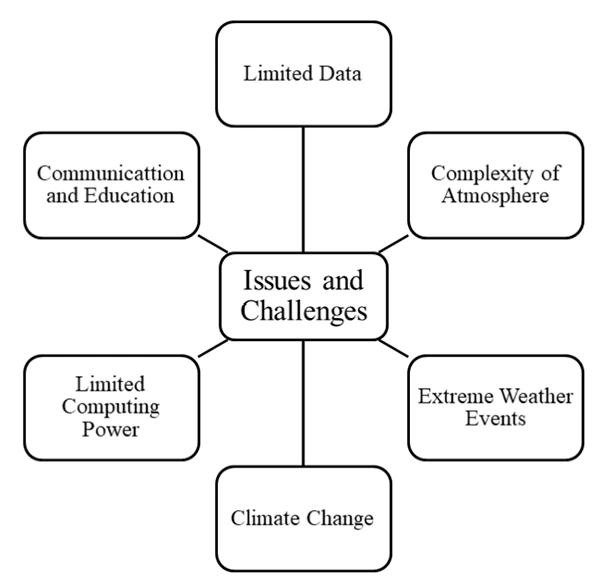
Software developers are consistently working to develop a more advanced program that is convenient as well as accurate.
The high-tech applications can monitor moisture, wind speed, UV radiation, light intensity, and even carbon monoxide levels in the air.
The most challenging part of forecasting is the changes in the atmosphere are continuous in time and space. Therefore, a report taken an hour ago becomes inaccurate for the rest of the day.
Limiting computing power for large storage and the high cost of the latest technology might be a burden for a few new industries.
However, the integration of weather APIs into IoT devices has to some extent bridged the limitations in the following manner:
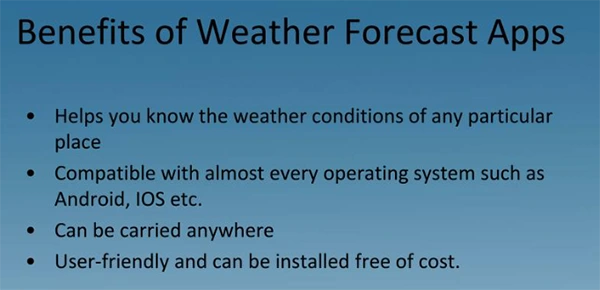
As mentioned earlier in this article, weather forecasting benefits the operations and management of many industries.
Automation along with accurate geographical location tracking improves the overall operations and its impact on companies.
The climate has a direct impact on the farming sector, impacting the seasonal crops. Floods, heavy rainfall, insects, and fire, are a few natural causes that can affect the quality of food.
With the IoT integration of smart irrigation, the sensors check the soil for its water content. When the soil moisture drops below a specific value, the system triggers the water supply.
It becomes the most effective innovation, reducing water usage by 30% while increasing crop yield.
This is taken to the next level with automation tech to irrigate a piece of land and spray fertilizers or pesticides on crops wirelessly. This system can also be utilized in house gardens or indoor plants.
Wherever you are traveling or transporting goods to a specific location, a location tracker and weather predictor are most helpful.
Temperature detection-based sensors control the conditions inside an airplane according to the weather outside for a smooth traveling experience.
Constant vigilance is required to predict any storms that the planes might encounter, thus preventing any damage or loss of life.
Smart tourism is the trend many travel companies are integrating to provide the best services to customers.
The competition is high in this industry and therefore, understanding the climate also helps with the bookings of customers.
THINGS TO CONSIDER
According to the 2020 SITA Air Transport Insights Report, 97% of airlines are planning to invest in applications for passenger mobile services, as well as 86% will invest in in-house virtual and remote IT services.
This is a rapid transformation that is leading the tourism industry to create a more customized travel package for customers.
By receiving weather forecasts in real-time, companies can ensure seating and also offer bonus air miles.
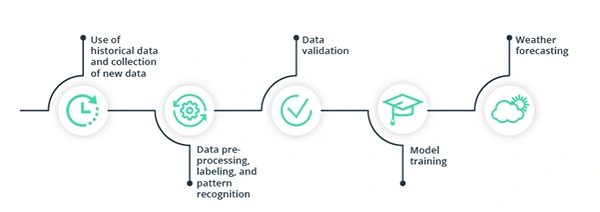
Utilizing IoT innovations in the fishery sector and safeguarding the aquatic regions has also improved over the years.
With intelligent fish farming and tracking control systems, it has become easier to analyze the water quality.
It also supports tracking the breeding and selling of freshwater fishes. This is not only helpful at the production and manufacturing level but with a QR code on the product package, customers will be informed about the quality of the aquatic product.
This also aligns with the food safety measures regulated by the government and therefore increases the revenue of the fish farmers.
The forecasting applications go further into securing the lives of people worldwide by predicting sudden sea storms. The fishermen are also advised to relocate to safe places to prevent damage and therefore, prevent heavy loss of their fishing equipment as well.
The Internet of Things is transforming the way we understand the air and water systems. The integration of the air monitoring system has air sensors to detect harmful compounds, collect data, and inform the local authorities.
The detailed analysis helps to further take necessary measures to lower the carbon monoxide and therefore save many people’s lives.
The graph below shows the U.S. weather information technologies market size since 2016. With the growing urgency of climate change, the systems are continuously updated and are expected to grow further till 2027.
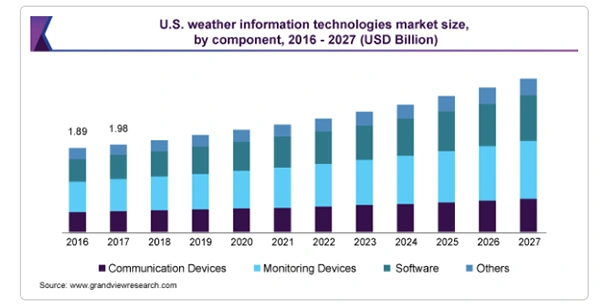
The Internet of Things (IoT) and weather prediction technology are working simultaneously to provide accurate information.
Automation is leading the way, with real-time reports helping many industries to manage their operations.
From a simple mobile device with a weather forecast to satellite sensors, technology is paving a bright future in 2024 and the coming years.
